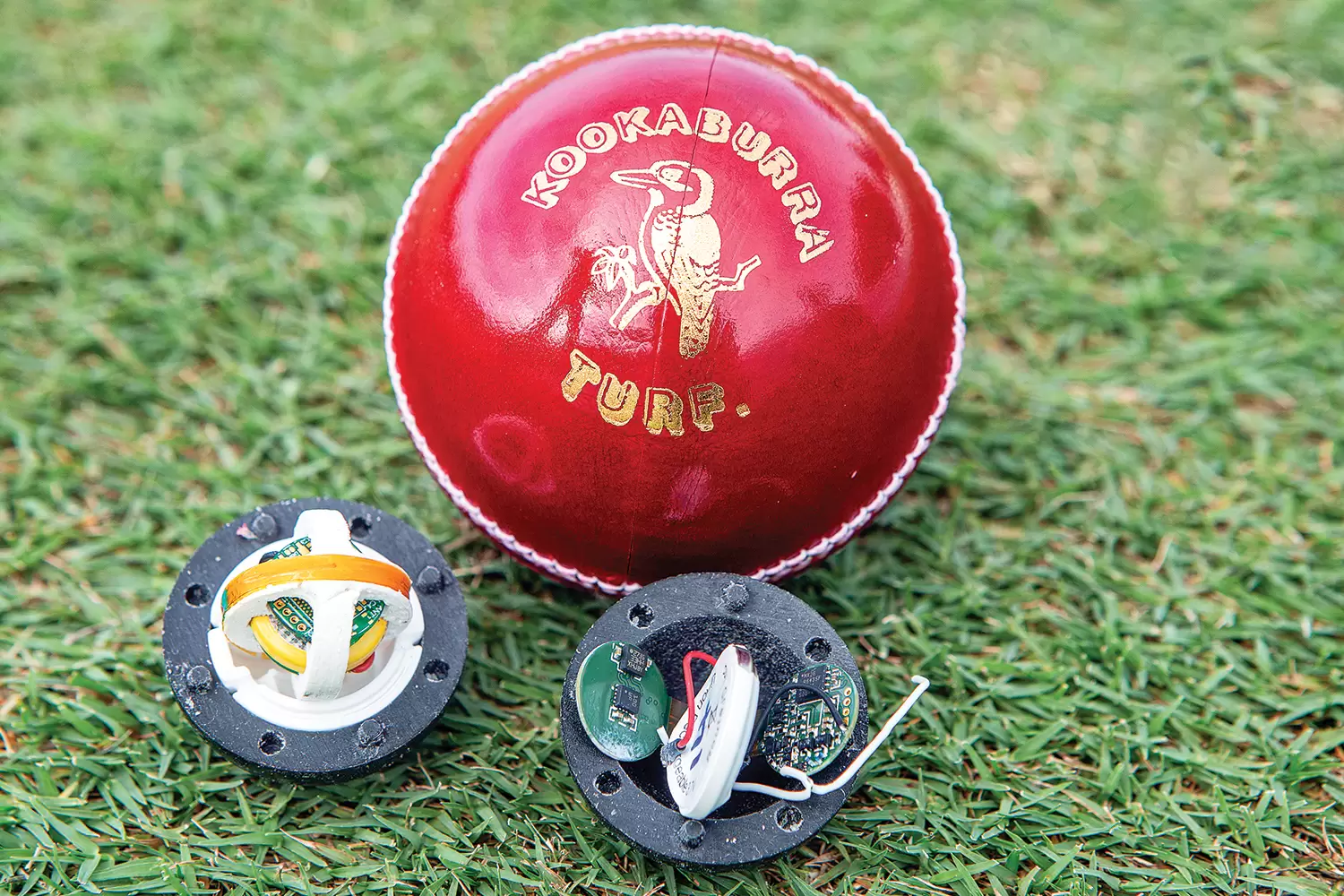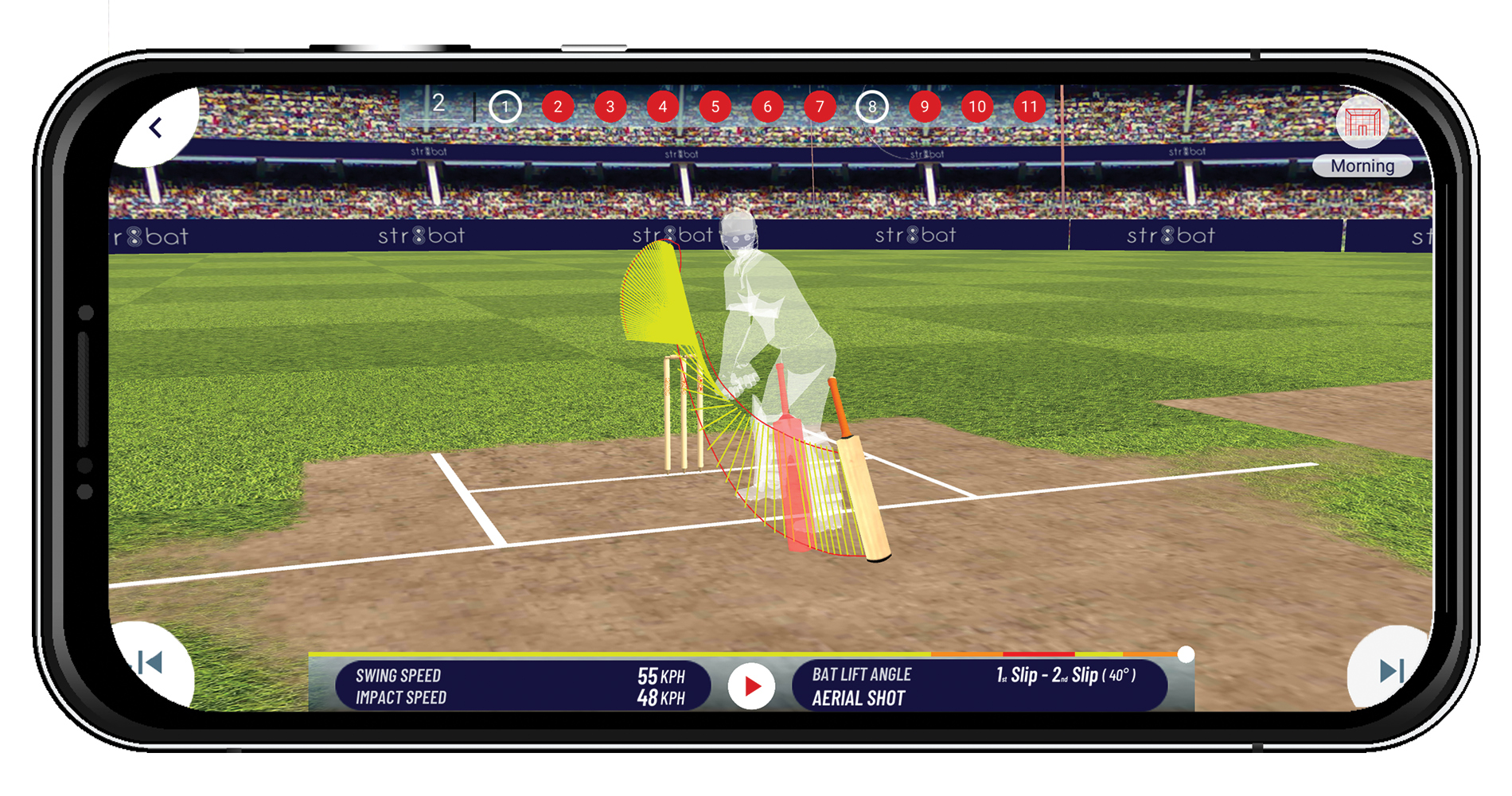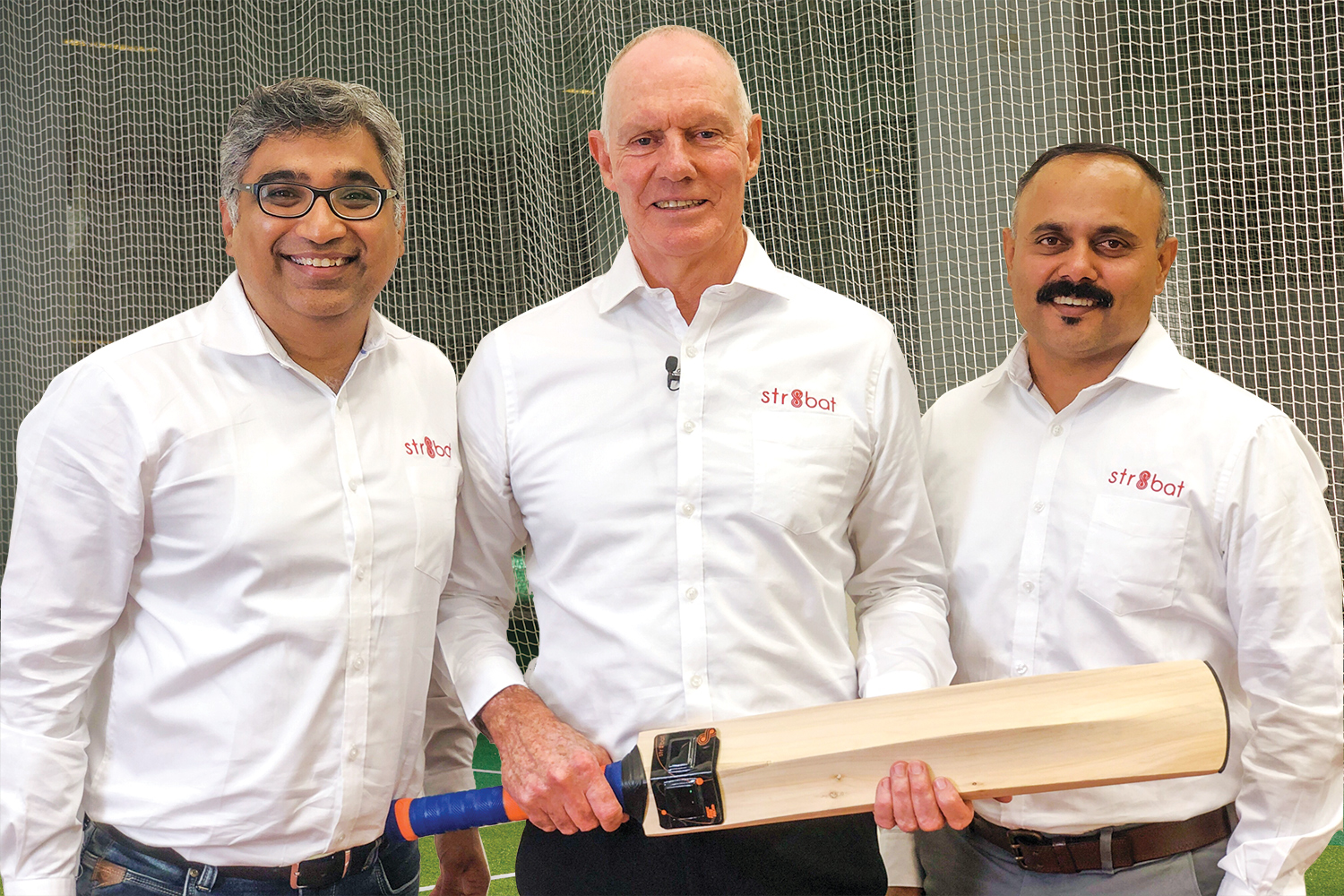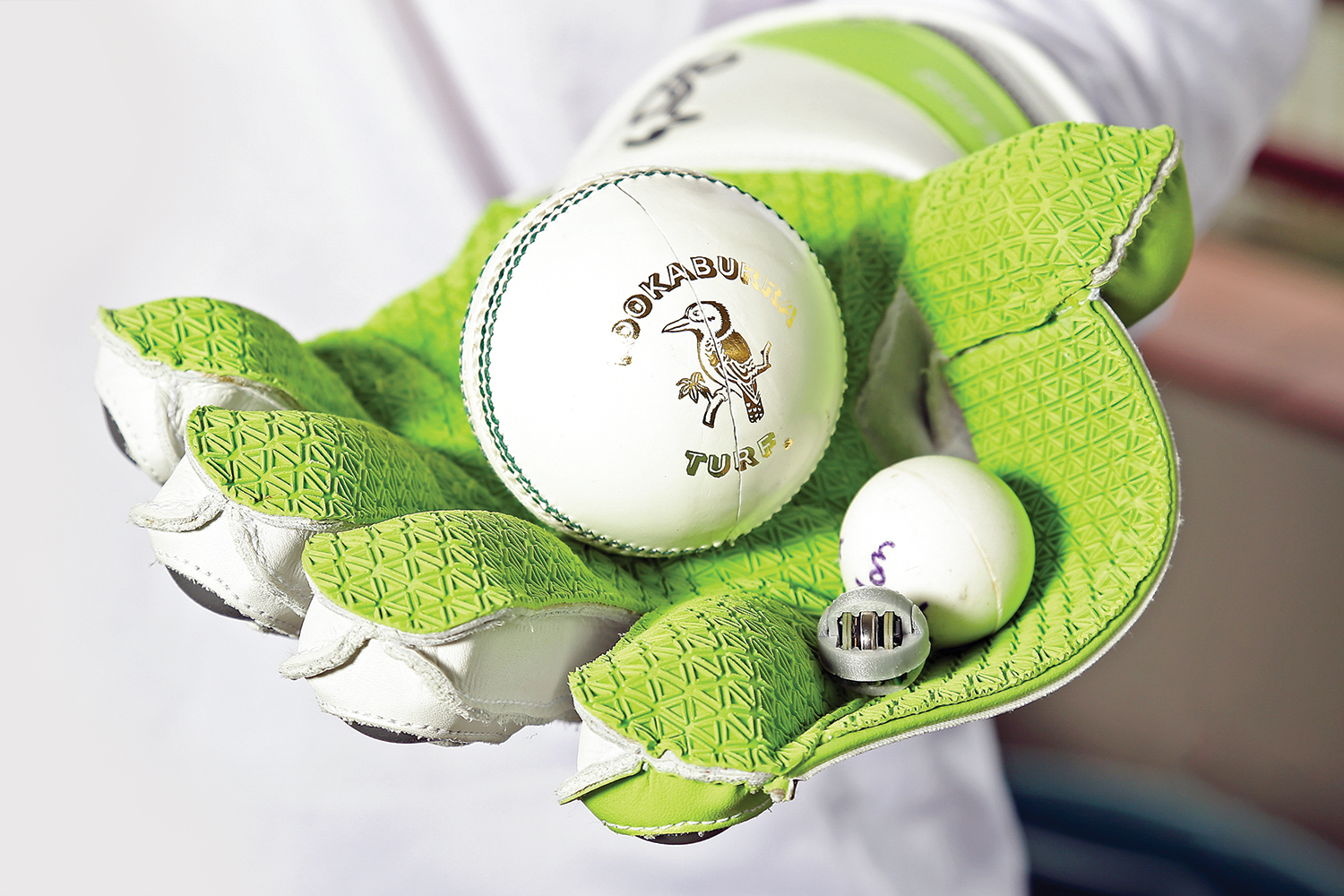Engineers are putting sensors and data-collectors inside cricket equipment, giving fans an even closer look at the game.
Cricket is the sort of game where people like to try and work out what will happen next.
That could be the cricket tragic, squabbling with friends and colleagues on the other side of the Tasman about whether Australia or New Zealand will win this year’s Boxing Day Test.
It could be the rival opening batsmen from those teams thinking about how to avoid 150 km/h bouncers from Lockie Ferguson and Pat Cummins. Or the TV commentator wondering whether the ball will swing in the first ever test at the new Perth Stadium, this month, as much as it used to at the old WACA ground.
To make a decent prediction, though, requires information. And whereas old stagers will tell you that a good eye and a cricket brain is all that’s needed to work things out, these days, people involved in cricket, from changing room to armchair, like to use technology to gather and check their information.
To get accurate data means putting tracking sensors as close to the action as possible.
And you can’t get much closer than on the actual bat and ball.
Stats and sundries
Sports equipment company Kookaburra hopes to have a new smart ball on the field for the Big Bash 2020-21 competition, although its presence has not been confirmed by Cricket Australia, the sport’s governing body.
If it is adopted, a microchip inside the ball would provide the live broadcaster with instant stats after every delivery.
That’s speed at release, pre and post-bounce, as well as spin values.

Current ball-tracking technology uses fixed stationary radar that sees a speed reading recorded at the same point regardless of how tall the bowler is.
This results in a speed bias in favour of a bowler with a lower release point — for instance, India’s Jasprit Bumrah.
Likewise, the bias works against taller quicks, like Australia’s current fast bowling attack. The new Kookaburra ball relays revolutions from one viewpoint, which should provide more accurate readings, according to electronics engineer Jon Sawdon Smith, who worked on the ball for Jetson Industries, one of Kookaburra’s technical partners.
“We replaced the traditional cricket ball cork and rubber insides with a silicon composite that contains the sensor and a small coin-cell Bluetooth battery,” Sawdon Smith said.
“The rechargeable system lasts for five to eight hours, making it useable in a club game or during training. It is radio-frequency based, not an inductive charge, so the ball needs to be placed five centimetres from the charging device, when recharging.”
With a smart ball, TV broadcasters could see how much speed is lost when a fast bowler bowls a bouncer or whether a spinner turns the ball more from over or around the wicket.
Commentators could make suggestions about what approach a bowler might best take against a particular batter, or speculate about the success of the tactics that the bowler actually chooses.
The nerds would lap it up.
Hit for six
The latest smart bat, Str8bat, is being promoted by the legendary former Australian batsmen and captain, Greg Chappell.
Since retiring as a player in 1984, Chappell has been a commentator, a coach and has now just retired after a third stint as a national selector.
“This technology will eventually be used by broadcasters to help commentators analyse the game,” Chappell said.
“But more immediately, I see it as a game-changer in the way batters train and for the coaches who train them.”
Str8bat is a mobile phone-sized sensor that affixes to the back of a cricket bat with a Velcro strip.
When a batter goes to hit the ball, the sensor records data about the angle of the backlift and the path of the bat, the speed of the bat’s downswing and the speed on impact with the ball.
These are performance metrics that give the batter and the coach an indication of what the player needs to do to improve their efficiency.
“The sensor captures linear and angular motion without cameras,” said Str8bat’s CEO Gagan Daga, an electronics and communications engineer.

Daga added that the sensor can record up to 300 hits in one go and that it transfers the data, remotely to a computer, tablet, or smartphone.
“A 3D-gaming engine turns the data into visuals, and cloud-based analytics enable deeper scrutiny of the batter’s performance,” he said.
Orthodox batting technique recommends that the bat should swing back and forth in a straight line with the trajectory of the ball, giving the batter the best possible chance to hit the ball.
“If your bat’s only online momentarily, it’s no wonder you’re nicking a lot of balls [to the wicket keeper or slip] or missing a lot,” Chappell said.
A batsman like Australia’s Steve Smith, with all those movements before and after the ball has been hit, might appear to contradict this.
But, for the crucial bit, when Smith swings the bat back to hit the ball, it comes down straight and in line with the ball.
At least that’s what it looks like to the naked eye.
Chappell explains that using Str8bat tech, you would know for sure.
“I can watch someone bat, picking the bat up at an angle to the gully, or like [former Queensland, Australia, and South Africa batter] Kepler Wessels, who used to tuck the bat in behind him,” he said.
“I can see it and try and explain it to a batsman, but they’ll swear black and blue they’re not doing that. And even when you pull the video tape out, they can still deny what they see. [The Str8bat visual] is hard to deny, as it gives you a 3D image of what you’re doing from all the different angles.”

Daga added that the Str8bat technology can isolate the bat’s swing and impact from other movements the batter might make before or after they hit the ball.
Perhaps some clever pundit or coach might use it to find a way to get Smith out — short of hitting him on the head.
Maybe they could have a look at whether Smith does anything different with his bat swing when he faces left-arm spinners, the one sort of bowler against whom Smith’s batting stats aren’t in a class of their own.
Taking the crease
Both the smart bat and ball have been tested by their makers.
But Cricket Australia has said that before the smart ball could be considered for use in professional cricket, it would need further independent testing to make sure it plays like a traditional ball and is unaffected by its internal mechanisms.
Sawdon Smith said that the ball does behave like a regular ball.
“The inner core is rigid enough to protect the electronics, but also flexible enough to give when it hits the ground or the bat,” he said.
“We used high-speed cameras to test how the ball compresses when it bounces. When a ball is being bowled into the ground at up to 150 km/h and hit at 70 km/h, that’s a lot of force acting on it.”
At the prototype stage, engineers looked at different plastics to make the core, Sawdon Smith explains, and used different grades of silicon and silicon composites — one that included a low-density material.
He added that the ball hasn’t been tested in water, but he thinks if someone hits it in a river or it got left out in the rain, the leather would be more likely to break than the electronics.
Daga said that the Str8bat sensor is also strong enough to withstand any vibration from impact but light enough not to affect the weight or swing of the bat.
Chappell sees a time when these sensors will actually be embedded inside the bat. Kookaburra has said that the smart ball technology will, in the future, be able to tell for sure whether a batter edges a ball and whether low catches have been taken cleanly.
Carrying the bat
Sometimes, however, cricket throws up a situation so bizarre that not even the most high-tech bat or ball sensor could hope to analyse what’s going on.
In December 1979, Dennis Lillee strode out to bat against England in a test match at the WACA carrying one of the aluminium ComBats that he was promoting for a company he co-owned.
It wasn’t long before it all kicked off. Lillee hit one towards the boundary, England captain Mike Brearley complained that the bat was damaging the ball, and, when Greg Chappell, who was Australian skipper that day, came out with a wooden bat for Lillee, the great fast bowler flung his ComBat across the field in a temper, and grudgingly carried on with the wooden one.
“The thing was useless anyhow; when you hit the ball it hardly went anywhere,” Chappell recalled.
“I’ve got no idea what Dennis thought he was doing.”
To work that one out, you would have probably needed a sensor attached to Lillee’s forehead.

First-class innings
Despite cricket’s obsession with predicting the future, the sport’s best moments are those that appear to defy prediction.
Jeff Thomson’s first bouncer of the 1974-75 Ashes series. Shane Warne’s ball-of-the-century against Mike Gatting in 1993. Ben Stokes’s remarkable match-winning hundred in this past winter’s Ashes Test at Headingly.
In the future, smart ball and smart bat technology would help broadcast commentators provide instant feedback to explain moments like these to the viewing public.

Take the Stokes innings. Analysts with the smart bat tech would have been able to tell how much harder Stokes swung his bat and hit the ball when he went into overdrive towards the end of that historic innings. They could figure out which Australian bowler he hit the hardest.
Sensors would record the drop in bat speed and impact force when Stokes pushed the ball into the outfield for a scampered two, and the increase, when he hit the ball over the fence for six.
They would also be able to see what happened to the trajectory of the bat when Stokes went for a reverse sweep or a switch-hit.
The smart ball sensor could indicate what impact the bowler changing his line, or the length, angle or speed of the ball, had on what Stokes tried to do and was able to do.
This article originally appeared as “Eye on the ball” in the December/January 2019 issue of create magazine.




how expensive will the str 8 bat be for the ordinary player please and where can we purchase one here in melb.